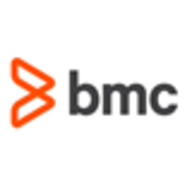

Bizagi and Control-M compete in business process management and workload automation, respectively. Bizagi holds an upper hand in ease of use and process modeling, while Control-M excels in enterprise-level workload management.
Features: Bizagi’s standout features include its process modeling and automation capabilities, BPMN 2.0 compatibility, and robust simulation tools. Control-M offers enterprise-level workload automation, cross-platform support, and comprehensive job scheduling, enhancing its integration and operational visibility.
Room for Improvement: Bizagi faces challenges with device compatibility, managing diagram elements, and complex licensing. Users also seek better integration, documentation, and analytics. Control-M users highlight its high cost and desire more seamless integration, improved reporting, and easier use for new features.
Ease of Deployment and Customer Service: Bizagi provides diverse deployment options but experiences issues with slow customer support unless premium packages are used. Control-M is noted for easy deployment but has mixed reviews on support, requiring premium services for effective problem resolution.
Pricing and ROI: Bizagi is favored for its cost-effective solutions with a free version, although recent pricing changes have caused concern. It provides good ROI mainly through process efficiency. Control-M’s high price is viewed as justified due to its enterprise-grade features and significant automation benefits. However, its complex licensing model affects its perceived value.
The main return on investment with Helix Control-M has been a reduction in downtime and minimization of manual interventions, which has improved our operational efficiency.
You can run a million batch jobs or tasks at night when all of your highly skilled people are at home sleeping.
By implementing automation tools, you can minimize human errors and improve efficiency.
It is a community product, there is not much support we can expect.
The toolset is very intuitive, so we didn’t need to contact their support much.
They quickly evolve with changing technology trends, easily adopt new features, and incorporate them into the product.
The technical support is very polite, helpful, and available 24/7.
If something fails at 3 AM in the morning, you need to fix it and get it back up and working really quickly.
There is no direct scalability option.
If I rate scalability from one to ten, I would probably give it a six.
It can absorb more workload wherever needed.
As the workload on Control-M increases, its scalability is much higher.
I would rate it a nine out of ten for scalability.
The downtime is higher compared to AWS.
The testing and development phases need to be more rigorous before releasing patches.
Once properly implemented, the system becomes very stable, which is one of its strongest attributes.
Reporting capabilities can be improved more, and community support should be increased.
For more mature environments, the integration to live systems is lacking, which affects its applicability.
They could provide more documentation and tutorials to make the initial setup easier to understand.
There should be an automation system for developers to set it up more easily and quickly.
What they've done about scheduling, other people are still trying to figure out.
Bizagi's pricing is very aggressive, and it was one of the reasons we chose it.
The licensing cost is very high, and they often consider switching to IBM Workload Scheduler or other options.
Pricing is generally affordable, though some features cost a bit more.
The best cell phone will always be more expensive.
It is open source.
The user interface is very good, making it easy for business people to understand.
Bizagi has rich functionalities; compared to other BPMN tools, it has more features.
Automation is more advanced, deployment is fast, and version control has been simplified.
The user interface is comprehensive and lets me view all my jobs on one page, monitor everything, and access the job history.
It is easy to integrate Control-M with technologies for data ops or DevOps processes as things change, and it is not complex compared to other workload automation tools available in the market.


Bizagi’s industry-leading low-code process automation platform connects people, applications, robots, and information. As the most business-friendly and flexible solution on the market, Bizagi enables true collaboration between business and IT, delivering faster adoption and success. Fuelled by a community of 1 million users, Bizagi powers over 1,000 organizations worldwide including Adidas, BAE Systems, and Old Mutual. For more information visit www.bizagi.com
Control-M by BMC offers orchestration for hybrid cloud workflows, starting at $29,000 annually. It's designed for teams managing dependencies efficiently with automation and scheduling capabilities.
Control-M is known for its automation, integration, and scheduling capabilities. It provides a user-friendly GUI for seamless third-party application integration and robust file transfer capabilities. Role-based administration features, self-service portals, and the ability to handle complex workflows enhance operational efficiency. Its control modules enable diverse integrations, while forecasting, monitoring, and alerting functionalities improve reliability and adaptability across platforms, making it essential for orchestrating tasks efficiently.
What are Control-M's key features?Control-M is vital in industries like financial services, data management, and IT operations. It automates batch processing, job automation, and file transfers, supporting applications such as SAP, Oracle, and Informatica. This enhances transparency, reduces errors, and provides insights into job performance and system status.
We monitor all Process Automation reviews to prevent fraudulent reviews and keep review quality high. We do not post reviews by company employees or direct competitors. We validate each review for authenticity via cross-reference with LinkedIn, and personal follow-up with the reviewer when necessary.